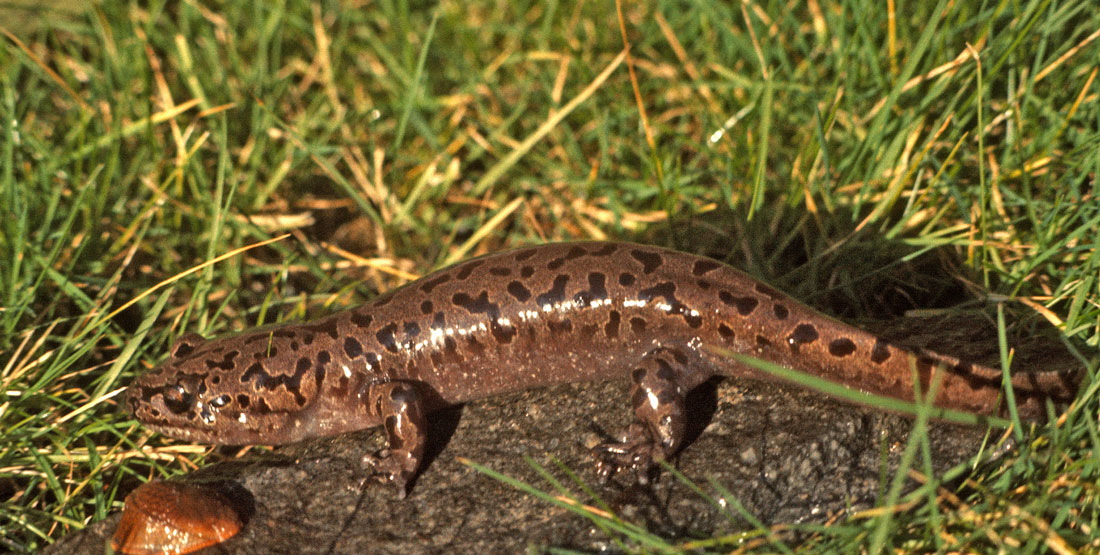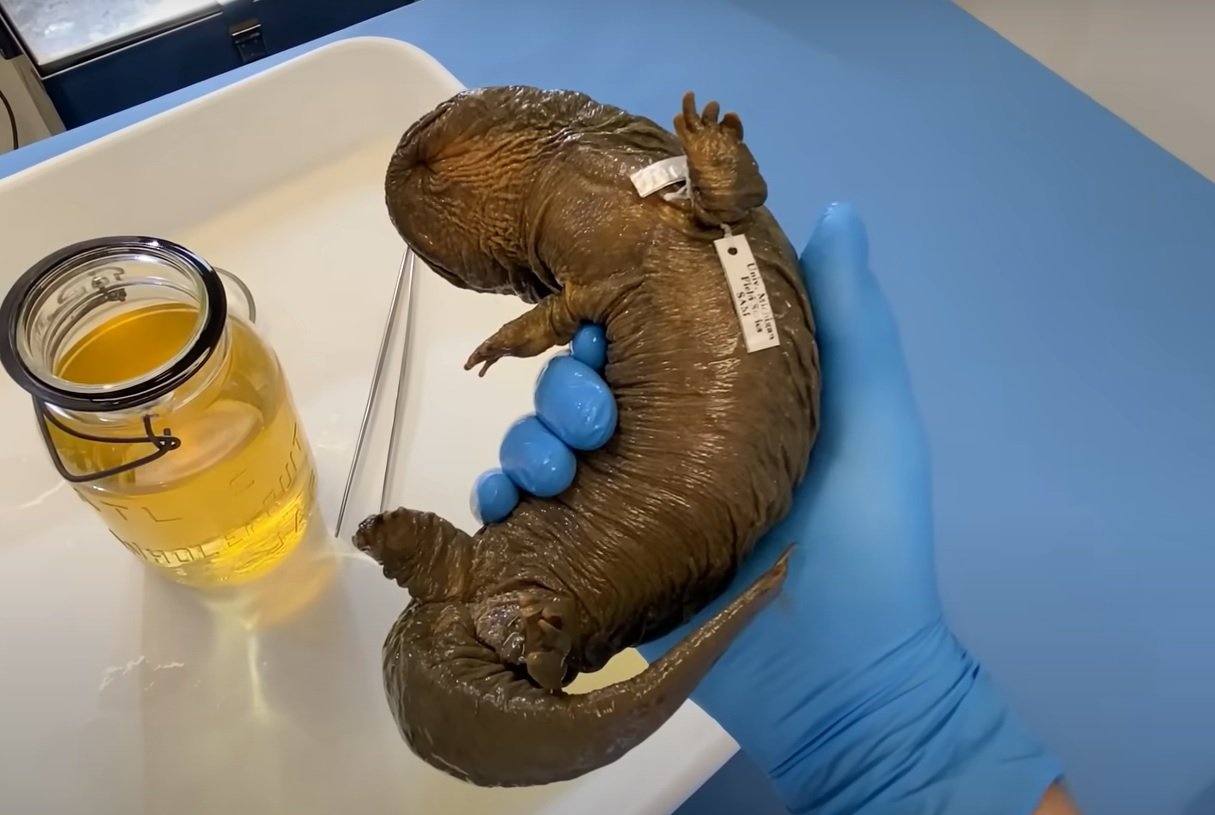The Giant Pacific Salamander, known scientifically as Dicamptodon tenebrosus, is a fascinating amphibian found in the Pacific Northwest region of North America. These unique creatures have captivated the attention of scientists and nature enthusiasts alike, with their impressive size, striking appearance, and intriguing behavior. Join us on a journey to discover more about the world of the Giant Pacific Salamander.

Credit: www.burkemuseum.org
Physical Description
The Giant Pacific Salamander is the largest terrestrial salamander in North America, with individuals reaching lengths of up to 13 inches. They have a robust, cylindrical body covered in moist, smooth skin that varies in color, ranging from dark brown to black. These salamanders have short legs, a broad head, and a wide mouth filled with sharp teeth.
One of the most striking features of the Giant Pacific Salamander is its wide, paddle-like tail, which it uses for swimming. This adaptation allows them to live in various aquatic habitats, including streams, rivers, and even coastal areas.
Habitat and Range
Giant Pacific Salamanders can be found in the temperate rainforests of the Pacific Northwest, including parts of California, Oregon, Washington, and British Columbia. They thrive in areas with abundant moisture, such as old-growth forests with access to water bodies like streams and ponds.
These salamanders are elusive creatures, preferring to remain hidden under rocks, logs, and leaf litter during the day. They are most active at night, venturing out to hunt for prey or during the breeding season, which occurs in the months of autumn and winter.
Diet and Predators
The diet of the Giant Pacific Salamander mainly consists of invertebrates, such as insects, spiders, earthworms, and slugs. They are sit-and-wait predators, relying on their excellent sense of smell to detect prey. Once located, the salamander will strike with lightning speed and consume its prey whole.
Despite their size, Giant Pacific Salamanders have a number of predators in their natural habitat. Some of their main predators include birds, larger amphibians, such as bullfrogs, and mammals like raccoons and otters. To protect themselves, these salamanders have the ability to secrete toxic mucus from their skin, discouraging potential attackers.

Credit: en.wikipedia.org
Reproduction and Life Cycle
During the breeding season, male Giant Pacific Salamanders engage in elaborate courtship displays to attract females. These displays involve the male swimming in a series of patterns and rubbing his chin on the female’s head and back. Once the female is receptive, the pair will engage in a courtship dance, culminating in the female laying her eggs in a specially constructed nest made of moss and leaves.
After a gestation period of several weeks, the eggs hatch into aquatic larvae known as “salamander nymphs.” These nymphs possess external gills that enable them to breathe underwater. They will spend the next few years in the water, growing and developing before eventually undergoing metamorphosis into terrestrial adults.
Conservation Status
The Giant Pacific Salamander plays a vital role in its ecosystem as both predator and prey. However, its populations are facing threats due to habitat loss, pollution, and the introduction of non-native species. Efforts are underway to protect and conserve their habitats, raise awareness about their ecological importance, and study their behavior to understand better their role in the ecosystem.
In conclusion, the Giant Pacific Salamander is a remarkable creature that continues to captivate our imagination. Its awe-inspiring size, unique features, and secretive nature make it a true wonder of the natural world. By understanding and appreciating this incredible amphibian, we can work towards ensuring its conservation for future generations to admire and cherish.
Frequently Asked Questions Of Giant Pacific Salamander
What Is The Average Size Of A Giant Pacific Salamander?
The average size of a giant Pacific salamander ranges from 10 to 14 inches.
What Do Giant Pacific Salamanders Eat?
Giant Pacific salamanders primarily feed on insects, small fish, and crustaceans.
Where Can The Giant Pacific Salamander Be Found?
Giant Pacific salamanders are usually found in the Pacific Northwest region of North America.
Are Giant Pacific Salamanders Endangered?
Yes, giant Pacific salamanders are currently listed as a vulnerable species due to habitat destruction.
